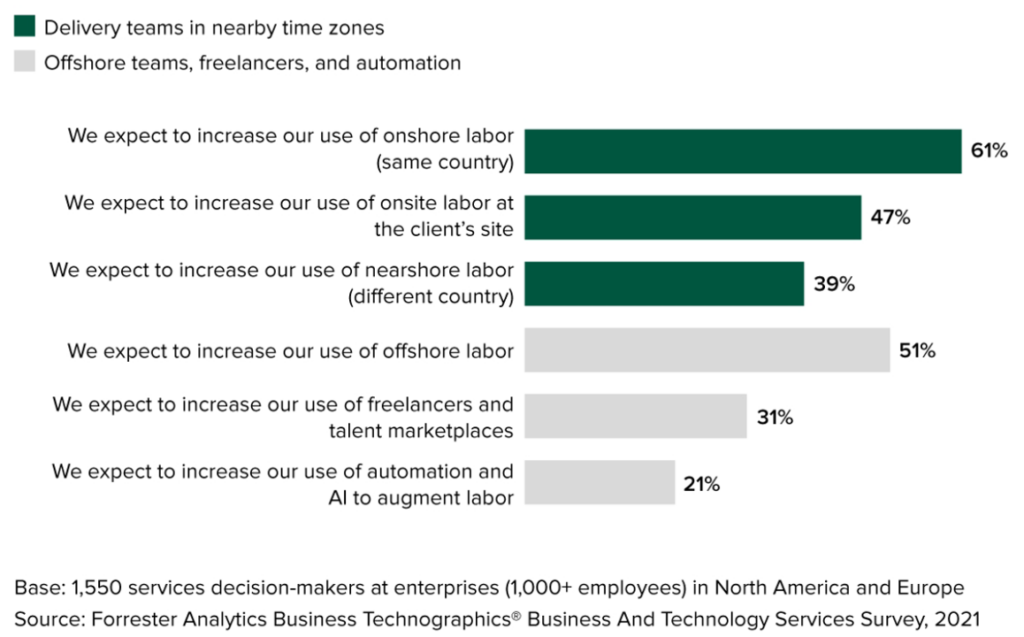Nearshore And Onshore Services Take Priority In 2022 — Here’s Why
Technology execs are keeping their partners close in both working hours and proximity. In our recent survey of 1,550 services decision-makers from North American and European enterprises, we asked how they expect their service provider delivery models — where the staffs are located — to change in 2022. They report increases across the board but with important changes in where that labor lives. Automation in services delivery and reenergized talent marketplaces garner a lot of attention and for good reason: They lower investment and provide flexibility.
But the major shift is toward staffing services from nearby locations (see figure). Double-clicking on this to find out which they think is most important, two-thirds of respondents who expect changes in their services provider model say that onshore, nearshore, and onsite staffing will be the most important to their business, while only 17% feel the same about offshore labor.

Three Factors Are Driving The Importance Of Services Partners In Nearby Time Zones
Here’s why nearby — onshore, nearshore, and onsite — service models are on the rise:
- Transformation and modern app dev need collaboration on demand. While “follow the sun” development models, in theory, enable 24-hour working cycles, sending requirements 12 hours ahead for the next team to wake up to isn’t real-time agile development. When creating and managing distributed teams working in the same or adjacent time zones, it’s easy to quickly connect in stand-ups and Slack-style messaging to keep everybody moving in the same direction.
- Nearby time zones enable more face time (or FaceTiming) to nurture trust. Trust is an imperative pillar in value-aligned partner relationships. You trust and rely more on partners when the value they bring goes beyond a cursory understanding of your technology stack or org chart. To seed co-innovation partnerships, where both parties share risks and rewards, you need frequent, real-time conversations and the occasional face-time (or FaceTime) meeting.
- Geopolitical and economic uncertainty introduces new risks with services sourcing. The war in Ukraine is only the latest salvo in geopolitical uncertainty affecting offshore (or nearshore, depending on your market) work. In the next 12 months, executives also recognize that the uncertainty of changing pandemic mandates and a volatile landscape of political sanctions will introduce new risks to using services providers outside of their own borders. The solution is a diversity of services locations so that if one goes offline, others can fill in the gaps.
We highlight these dynamics in our latest report, Onshore And Nearshore Services Gain Full Focus As Business Transformation Demands A Tightly Knit Partner Strategy. We have much more research on how to optimize your engagement with your services partners. Give us a shout, and we’ll help you make the smartest choice for your needs.
[Thanks to my colleagues Amanda LeClair, Taanya Malhotra, Jeffrey Rajamani, Ashutosh Sharma, and Kara Wilson for their help with this research.]
